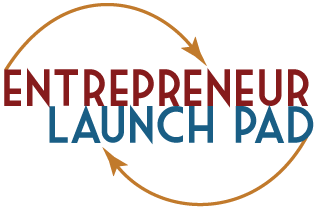What does it take to start a business?
Wyn Dunford, adjunct professor at LDS Business College, showed us a series of photos of rather unusual ways to use everyday items in unusual ways. A shopping cart was shown on its side being used as a grill over a campfire, and again as a replacement for the front wheel on a bicycle. There were several others, but the final one was extended legs zip tied on a folding ladder so the ladder would sit upright in a stairway. In each instance, he asked the question, “Is this a good idea or a business?” The final one elicited the response that someone had noted that want and made a business out of it–Little Giant Ladder Systems created by Hal Wing the business founder. This is now a multi-million dollar business. Ideas can come from anywhere, and some can be very viable businesses.
He told us how he worked in the family business, Dunford Donuts, as he was growing up. But he vowed he would not do it after he graduated from college. He was employed in a medical surgical supplies business and made himself so valuable to the business, they asked him to go to Salt Lake City from Southern California to establish a new branch of the business. The business was acquired by new owners after about six months and they fired him. He became a rep. for surgical supplies, but was struggling. Someone at the hospitals he was selling to suggested that he set up to rent the equipment to the hospitals instead of trying to sell.
He looked around and found another guy using this same business concept. He called him and asked him if he would share the business with him. Orin Abrahamson, in Portland, Oregon, said he would do so if Wyn would join him in a salmon fishing trip. Wyn did and learned how to make it work. The only problem was his lack of funding for the expensive machines. He pondered it, and realized that the reps had demo machines. He convinced one to sell him that machine at a time when a hospital needed it. He rented the piece to the hospital for that particular need. And since he was making payments, the rental paid for the payments. The effort was so successful, he paid off the first piece of equipment early, and was already renting other pieces that he arranged to get in a similar fashion as the first. His company never had a cash flow problem due to the innovative way he’d arranged to get and pay for the equipment. He built up a good business in this area and expanded first to Denver, because at the time, he could fly there for only $19.95 from Salt Lake.
Businesses are created from ordinary things that can be changed in such a way as to make it better, more efficient, easier to use, expand its uses, etc. New businesses are created because there was something there that you could see, that no one else was willing to put into play. They were not willing to risk the idea and grow it into a successful business.
Your Business Model
All entrepreneurs should have a scaleable business model, not a business plan that does not consider the reality you are dealing with as you start your business. A business model describes the rationale for your business, how it will work and what the organization is like. This model creates, delivers, and captures the value of your business.
These ideas are given in more detail in the book, Business Model Generation, by Alexander Osterwalder and Yves Pigneur. There are 9 segments to the business model:
- Who’s my customer? Get it really clear.
- What’s the value I give? What is the problem that you solve?
- What are the channels I use to get my products to my customers?
- What are my customer relationships?
- What are my revenue streams?
- What are my key activities?
- Who is my key partner?
- What are my key resources? Determine the assets or resources you have to have.
- What is my cost structure?
